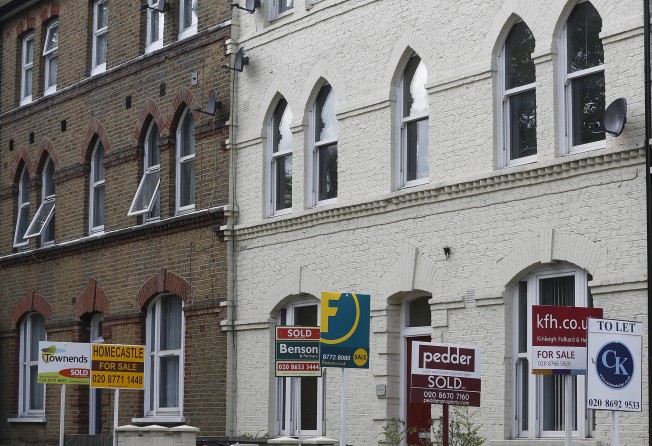Foreign demand fuels London surge
London prices continue to defy the prophets of doom, writes Susie Watkins Polakova

It is keeping the governor of the Bank of England awake, but despite saying the British housing market is the "biggest threat" to the economic recovery, Mark Carney has made only modest caps to constrain a big property bubble bouncing over London.
The continued steep climbs in the price of homes in the capital is unprecedented, with one agent claiming homes in the right streets have increased in value by £588 (HK$7,699) - every day - over the past year.
But Carney, despite warning that the London housing bubble cannot continue, imposed only two minor changes to lending.
The Financial Policy Committee limited the proportion of new mortgages that are 4.5 times income to 15 per cent of a bank's total mortgage lending and insisted that banks ensure borrowers can pay off their loans, even if interest rates rise 3 per cent over the next five years. The measures were seen as a modest "fire break" to risk, but not major to deflate the housing bubble.
Yolande Barnes, director of research at one of the world's largest real estate companies, Savills, says: " There has been quite a party in London house prices since 2009. Many would say the party balloon looks over inflated but not all balloons burst - some can sit in a corner slowly deflating."
Perhaps the house-price party in London is still in full swing. According to Colliers International, demand from outside Britain for properties in the capital is still at record levels.
Richard Levene, sales director of international properties at Colliers, says the company has experienced "exceptionally good" sales of London property from Singapore in the early part of this year, up 10 to 15 per cent.
"Singaporeans deem the UK to be a safe place for property investment and being familiar with the place has also contributed to buying confidence. It is difficult to predict when a price correction will happen or if it will happen," he says.
Tellingly he adds: "There are no signs that a correction is going to happen in the near term."
Singapore showed a big surge of interest in the British property market immediately in the aftermath of the government backed scheme "Help To Buy", allowing buyers to move in with just a 5 per cent deposit.
Thirteen thousand homebuyers took advantage of the scheme and the knock-on effect was simply to encourage even more overseas investment, particularly in London.
Those who are sure that the bubble in prices is about to burst point to the uncoupling of prices compared to earnings.
As a rule of thumb, houses are affordable if they cost around three times earnings and that once you get beyond four times you're moving into difficult territory. But even in the less glamorous postcodes, the average London house price is now eight times the average first-time buyer's salary.
However, critics are keen to point out that in London, average is not normal and many buyers don't need a mortgage or the encouragement of British interest rates being at a record low for over five years.
Indeed there is new demand for homes in London from unexpected quarters.
In the wealthy district of Mayfair, Indian families and businesses have become the biggest overseas property buyers. It is estimated 3,000 Indian families own property there, with investors spending around £450 million buying 221 residential properties last year.
They now make up the largest overseas group in Mayfair (25 per cent) well ahead of other Asian and continental European buyers (19 per cent) and Russians and Middle Eastern buyers (13 per cent).
According to the Office for National Statistics, the typical London home now sells for £485,000, with prices up 18.7 per cent in the 12 months to April. Savills estimate that London's 10 richest boroughs are worth 9 per cent more than Scotland, Wales and Northern Ireland combined.
Sophie Chick, Savills residential research analyst, says that the prime central boroughs of Kensington and Chelsea and the city of Westminster have led the recovery, with values 52 per cent above their 2007 peak. Overall prime central London values are on average 40.2 per cent above the peak, while all prime London average is up 37.9 per cent.
But Chick estimates there is still value to be had from property - but on a more manageable scale.
"Savills' five-year growth forecast (2014/2018) is for prime central London to be up 23.1 per cent and outer prime London up 22.7 per cent.
"In terms of a bubble, I think it was widely misunderstood. It is rather a question of a market that has risen very sharply and we now expect the pace of growth to slow."
This fits in with a report from Britain's biggest property website which reports that prices have come "off the boil". In June, for the first time this year, the asking prices posted on the Rightmove website for homes in London fell by 0.5 per cent. Earlier, the British Bankers' Association reported mortgage approvals - an indicator of future sales - had dropped for the fourth month in a row in May, down 3.5 per cent.